Discovery of IVC & Theories of Origin - UPSC PDF Download
| Table of contents |

|
| Discovery of the Indus Valley civilization |

|
| What are History and its sources? |

|
| IVC & Contemporary civilizations |

|
| Ancient Civilization of the World |

|
| Timeline of IVC |

|
| Theories of Origin |

|
Discovery of the Indus Valley civilization
The first account of the Indus Valley Civilization in the modern era was made in 1829 by an official of the English East India Company named Charles Masson. His observations were documented in his book, ‘Narrative of various Journeys through Baluchistan, Afghanistan and Punjab’ which was published in 1842. In 1853, Alexander Cunningham- the Director-General of the Archaeological Survey of India (ASI) visited Harappa. It was then thought to be a long lost Buddhist city.
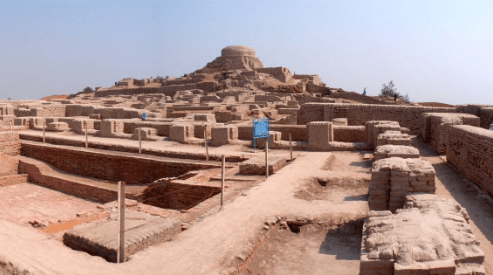 Mohenjo-Daro
Mohenjo-Daro
In the 1920s, ASI carried out excavations in the Indus valley at the ruins of the two old cities - Mohenjo-Daro and Harappa. Daya Ram Sahni excavated Harappa in 1921 and Mohanjodaro was excavated by R.D Banerjee in 1922. In 1924, John Marshall, Director-General of the ASI, announced the discovery of a new civilization to the world located at the Indus river basin and coined the term INDUS VALLEY CIVILIZATION. He also referred to it as the Harappan culture. The IVC was an ancient civilization located in what is Pakistan and northwest India today, on the fertile flood plains of the Indus & Saraswati rivers. Hence, it is also called the Indus-Saraswati civilization. In the next few decades, extensive digging and survey revealed a large number of ancient settlements such as Chanhudaro(1930), Kalibhangan(1952), Lothal(1954), Banawali (1973). Let us study the History of the IVC and its various aspects.
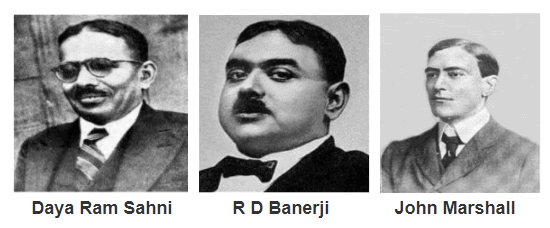
1. Harappa
2. Chanhudaro
3. Mohenjodaro
4. Banwali
Select the correct answer using the following code
What are History and its sources?
History deals with the study of the past. It comes from the Greek word “historia”, which means the knowledge acquired through investigation. Prehistory is another category within History that deals with the events prior to the invention of writing systems. The historical method comprises the techniques and guidelines by which historians use primary, secondary, and tertiary to write the history.
Sources of history can be broadly categorized as;
1. Primary Sources- This includes original sources such as written documents, coins, artifacts, art, inscriptions, sculpture. Example: Allahabad inscriptions, a bronze statue of a dancing girl from Mohenjo-Daro.
2. Secondary Sources- These are literary that make reference to the primary sources.
Example: The Vedas, the Ramayana and, the Mahabharata and Puranas etc.
3. Tertiary Sources- Tertiary sources are sources that index, abstract, organize, compile, or digest other sources. Some reference materials and textbooks are considered tertiary sources when their chief purpose is to list, summarize or simply repackage ideas or other information. Tertiary sources are usually not credited to a particular author.
Example: The oral stories of several Central Indian tribes.
In certain situations secondary and tertiary sources would serve as primary sources 'dearth of original sources'.
IVC & Contemporary civilizations
A civilization is a complex human society that may have certain characteristics of cultural and technological development. The word ‘civilization’ is from the Latin word ‘civitas’ meaning city.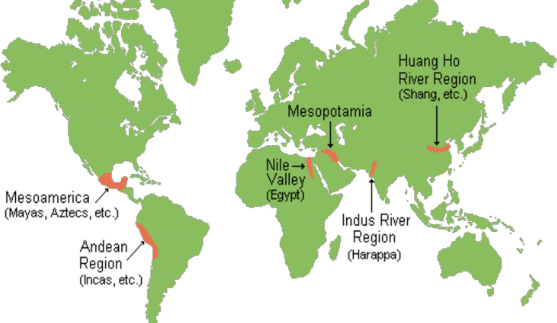
Some of the earliest civilization consists of the Mesopotamian and Egyptian civilization, the Indus Valley Civilization, the Chinese Civilization and later the civilization of Mesoamerica and the Andes.
Ancient Civilization of the World

Two other civilizations developed much later than the above contemporary civilizations - Mesoamerican civilizations in Central Mexico and Andean civilization on the slopes of Peruvian Andes and the Pacific coastal valleys downhill.
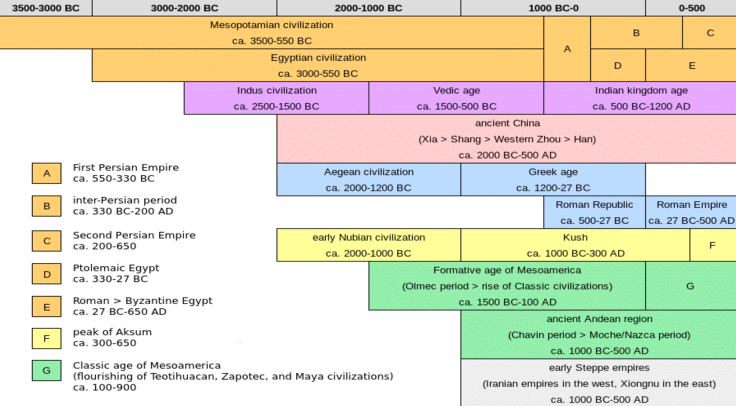
Timeline of the Ancient world
 |
Download the notes
Discovery of IVC & Theories of Origin
|
Download as PDF |
Timeline of IVC
IVC is divided broadly into three phases of development:-
1. Early Harappan Phase from 3300 to 2600 BCE:
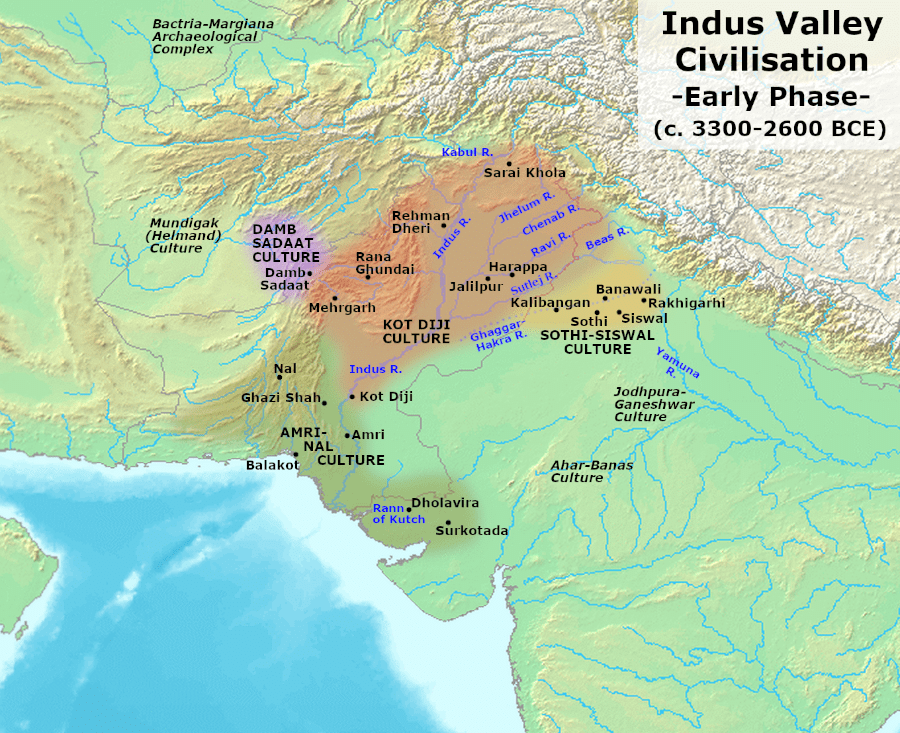
The Early Harappan phase is related to the Hakra phase, identified in the Ghaggar-Hakra river valley. The earliest examples of the Indus script date back to 3000 BC. This phase is characterized by centralized authority and increasingly urban quality of life. Trade networks had been established and there is also evidence of the cultivation of crops. Peas, sesame seeds, dates, cotton, etc, were grown during that time. Kot Diji represents the phase leading up to the Mature Harappan Phase. Mehrgarh is an important early Harappan site discovered in 1981 at the foot of the Bolan Pass in modern-day Pakistan.
2. Mature Harappan Phase from 2600 to 1900 BCE:

By 2600 BC, the Indus Valley Civilization had entered into mature stage. The early Harappan communities were turning into large urban centers, like Harappa and Mohenjodaro in Pakistan and Lothal in India.
3. Late Harappan Phase from 1900 to 1300 BCE:

The signs of a gradual decline of the Indus River Valley Civilization are believed to have started around 1800 BC by 1700 BC, most of the cities were abandoned. However, one can see the various elements of the ancient indus valley Civilization in later cultures. Archaeological data indicates the persistence of the Late Harappan culture till 1000-900 BC.
Theories of Origin
Since its discovery, there have been numerous theories proposed to explain the origin of the Indus Valley Civilisation. Some of the most popular origin theories are;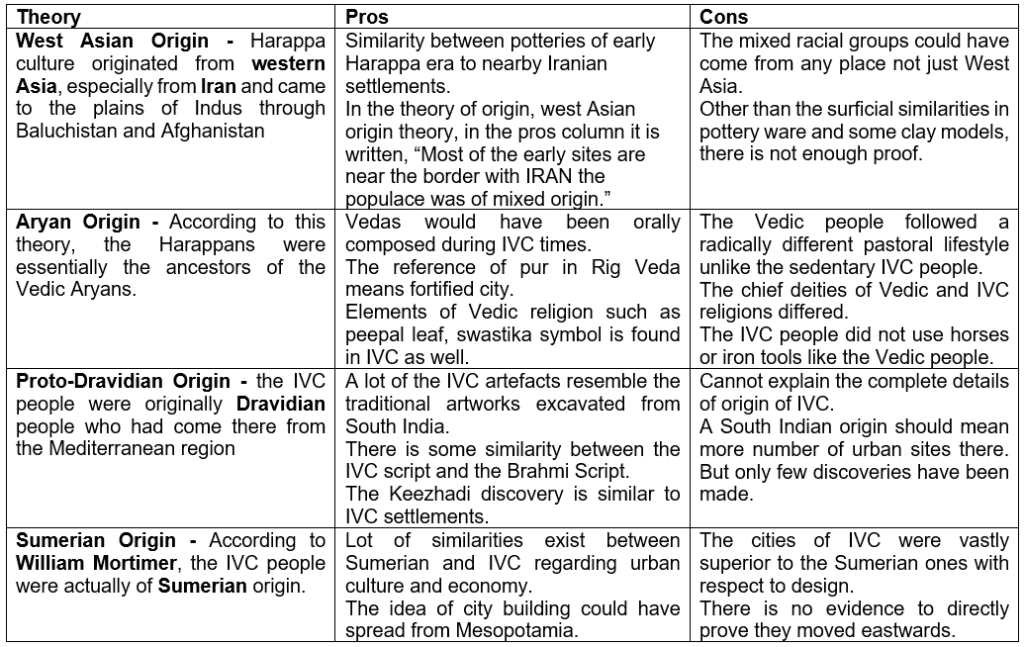
FAQs on Discovery of IVC & Theories of Origin - UPSC
| 1. What is the history of the Indus Valley civilization? |  |
| 2. What are the sources of information about the Indus Valley civilization? |  |
| 3. How does the Indus Valley civilization compare to contemporary civilizations? |  |
| 4. What is the timeline of the Indus Valley civilization? |  |
| 5. What are some theories about the origin of the Indus Valley civilization? |  |






















